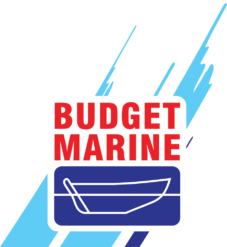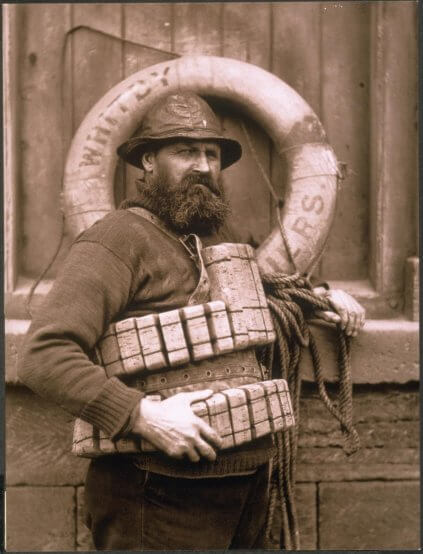
I begin this blog with a disclaimer, what follows is my opinion and my opinion only, it is not the opinion of Budget Marine …
I was horrified to find that most States in the US mandate the wearing of lifejackets when on the water. For small watercraft such as kayaks and jet skis it makes sense but on larger vessels, say a families’ cruising boat, I think it should be down to the individual if they chose to wear one or not. Children should, of course, wear a flotation device and adults too, if they feel more comfortable, also, if the skipper says he wants you to wear a lifejacket then don’t argue.
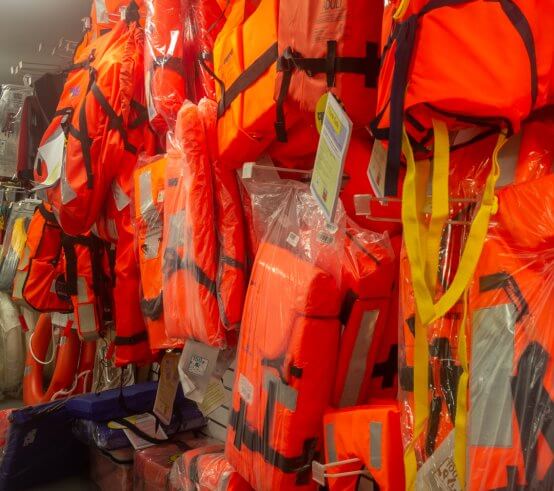
Having almost drowned three times you can see why I have an opinion on this. But, and it’s a big but, I do understand that if you fall overboard or, even worse, are knocked overboard and you’re not wearing a lifejacket your chances of survival are reduced. What I’m getting at here is that in my opinion wearing a lifejacket should be down to personal choice and common sense and not the law, after all the freedom of the seas is one of the last great freedoms we have left.
So, do I ever wear a lifejacket, of course I do if I think one is called for, and I wear a self-inflating PFD with a built-in harness, I find the other type of PFD way too bulky although I do have several on the boat. A quick note on harnesses. Too short and they are a real pain and restrict your movements, too long and they won’t prevent you going overboard although they will keep you attached to the boat. I use a double carabiner clip system with one long tether and one short. This allows me to clip on one line before unclipping the other.
Lifejackets aside, let’s look at ways of making sure you stay on board. Guardrails or stanchions around the boat are literally lifesavers but they need to be of the correct height. Also, the lifelines that pass through the stanchions should have some way of quick release. My lifelines are lashed to the push-pit with several strands of line that I can quickly cut (if you are carrying a knife, and you should be. lick here to read a previous blog on great knife options). Why do this? Well, try hauling someone weighing 200lb, who’s unconscious and weighted down with wet clothes, up the side of the boat and over the top of a 30 inch high lifeline, and you’ll know why. Being able to quickly reduce the height of the lifelines will save your back and possibly a life (see diagram).
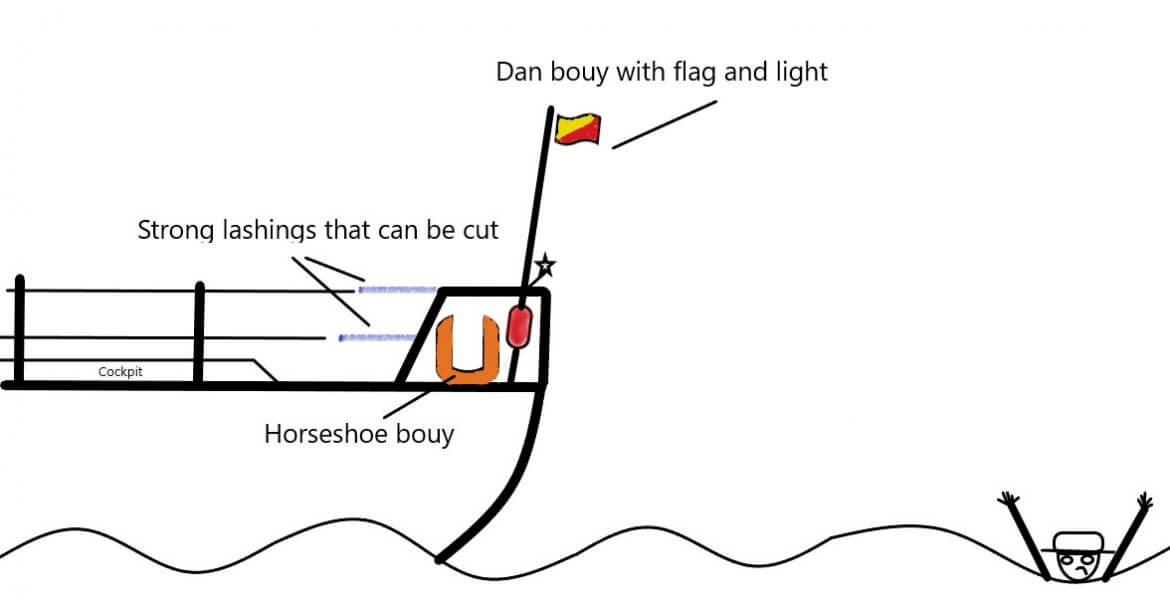
A boarding/swim ladder is a great help but not if it’s deep stowed in the lazaret. The same goes for the various slings designed to help you recover someone from the water.
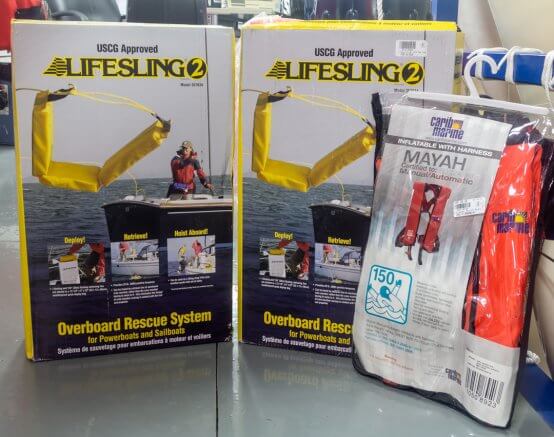
Various recovery devices are available and might be your only hope of lifting a heavy or unconscious victim 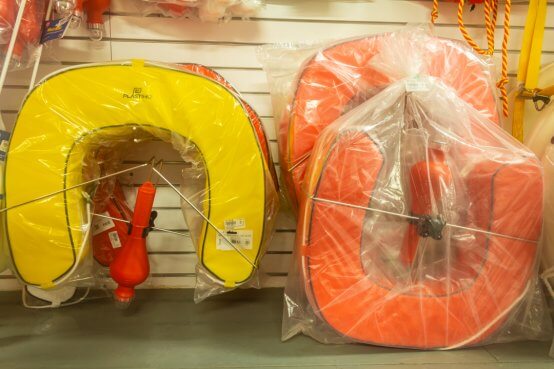
Horseshoe buoys, one on either quarter and ready to deploy
All boats should be equipped with a quick-release Dan Buoy with an attached light. And quick-release means not having to untie a lashing to launch it. Here’s a statistic. If someone goes overboard at six knots, they will be 100 yards astern 30 in thirty seconds. Add in a boisterous sea and a dark night and you can appreciate the problem.
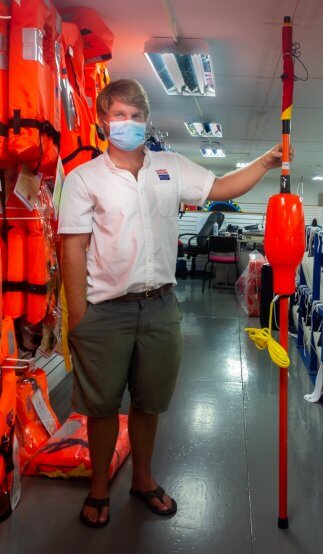
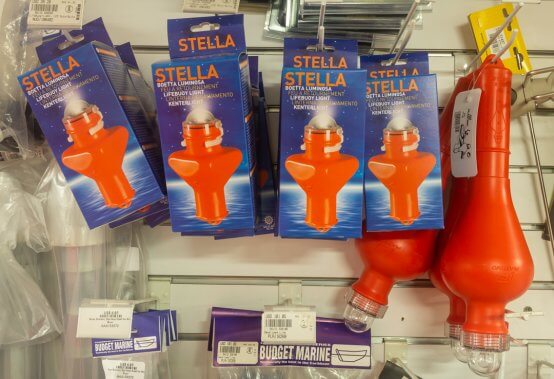
If you are single-handing then your only chance is if you are towing a line astern, it has happened and single-handers have got themselves back on board.
If there are two people onboard and one goes over the side then the remaining crew faces a huge dilemma because as they go into rescue mode they are, at some point, bound to lose sight of the victim. Should they dash below and hit the man overboard button on the GPS? Launch the Dan Buoy and Horseshoe Buoy? Make a crash stop? Put the boat about? Start the engine? Throw over the cockpit cushions? (Which isn’t as silly as it sounds.)
Large crews offer more chance of recovery but only if the skipper or person in charge of the watch knows what they are doing, can remain calm, prevent panic, and stop people shouting and dashing around like headless chickens.
The advent of personal electronic tracking devices, which are now relatively inexpensive, offer the person overboard a far better chance of recovery than ever before with some boat owners insisting that crew each bring one aboard as part of their personal equipment.
G.E.Brown©2020
